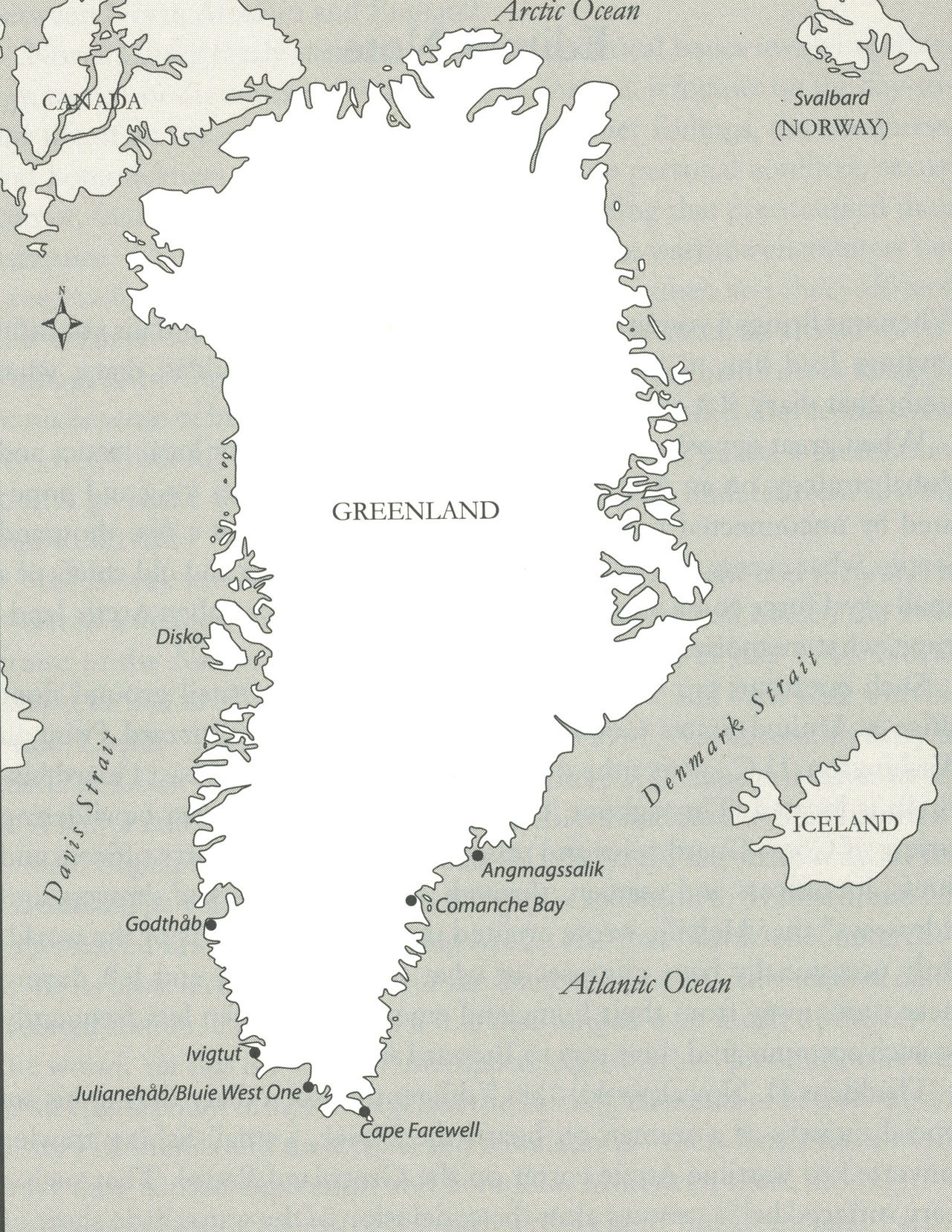 On April 9, 1940, Germany’s occupation of Denmark, in conjunction with its
On April 9, 1940, Germany’s occupation of Denmark, in conjunction with its 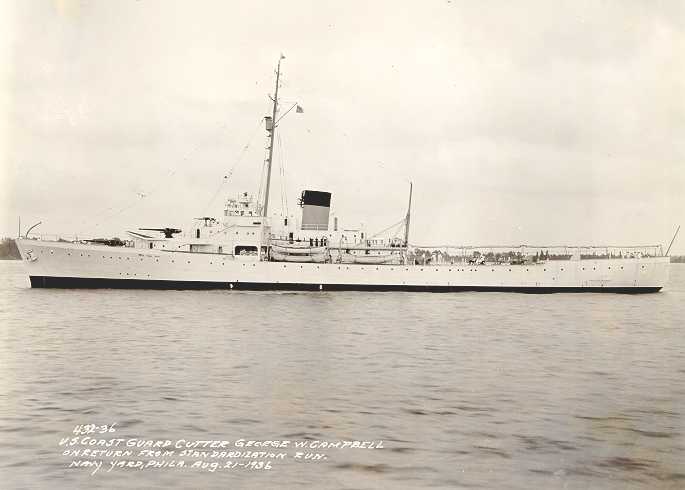 invasion of Norway, marked a turning point in the U.S. Government’s relationship to the war in Europe. Suddenly, America’s strategic interests in Greenland were jeopardized.
invasion of Norway, marked a turning point in the U.S. Government’s relationship to the war in Europe. Suddenly, America’s strategic interests in Greenland were jeopardized.
After occupation, the Danish king ordered all Danes to submit to their new master, and Germany allowed Denmark a semblance of its former sovereignty. On April 10, Denmark’s colony of Ice-land declared its independence from the mother country. The status of Greenland, however, remained uncertain.
Unlike Iceland, Greenland is part of the Western Hemisphere and U.S. policy kept the war in Europe out of the Western Hemisphere. In September 1939, President Franklin Roosevelt had al-ready established a “Neutrality Zone” along the East Coast, which extended 300 miles offshore. That was followed by the Pan American Conference known as the Act of Panama of October 1939, and America’s revised Neutrality Act, of November 1939 announcing the joint defense of the Western Hemisphere.
Cryolite
The Americans immediate strategic interest was the cryolite mine at Ivigtut, located near the tip of Greenland. The Inuit people called cryolite “The ice that does not melt in summer.” The miner-al cryolite (in its natural form or in its synthetic form) is necessary to the electrolytic process producing aluminum and this mine was the United States’ only commercial source of the mineral required for producing aircraft.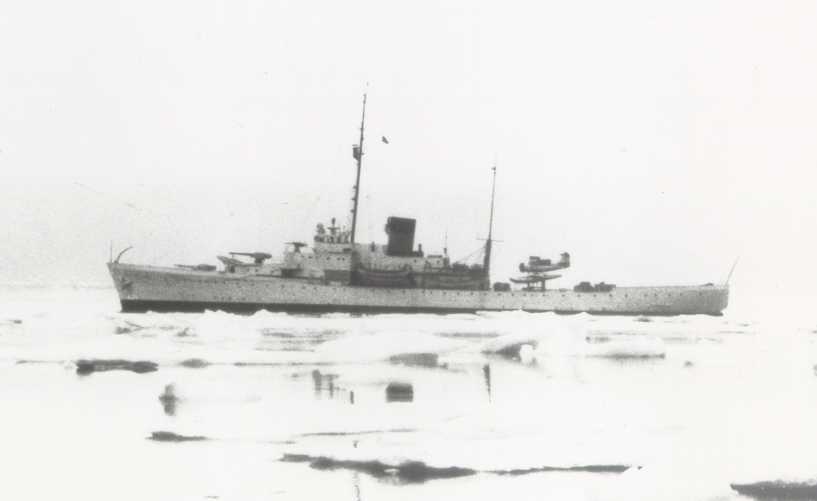
Greenland Operations
Meanwhile, various interested parties scrambled. Greenland had been dependent upon Denmark for its trade and economy and was closed to outsiders. Now, its population was cut off and defenseless. There was no military presence, militia, nor even a police force in Greenland. The Danish ambassador to the U.S., Henrik de Kauffmann, promptly consulted with the U.S. State Department and Greenland’s two governors. Before it entered the war, it was important for the U.S. to maintain its own neutrality, while it was necessary that Kauffmann maintain the facade of rep-resenting his king’s government, which was now under German control.
Britain and Canada had their own strategic interests in Greenland. Canada was building airplanes for Britain, and it obtained cryolite from Ivigtut, so Canada began to mobilize a “Force X” to seize the mine. On April 16, 1940, Canada informed the U.S. State Department of this plan, and of Britain’s plan to seize Iceland. During a late April visit, the Canadian Prime Minister met with President Roosevelt at Warm Springs, Georgia. Roosevelt asked him to stay out of Greenland and indicated the U.S. would protect the territory’s neutrality. Next, Roosevelt warned all belligerents to stay out of Greenland. However, the U.S. also needed the political and diplomatic cover to protect Greenland.
Ambassador Kauffmann established the American Greenland Commission April 25, 1940, to deal with the welfare and economy of the population in Greenland (at that time, about 18,000 natives and 400 Danes). Funding came mainly from exports of cryol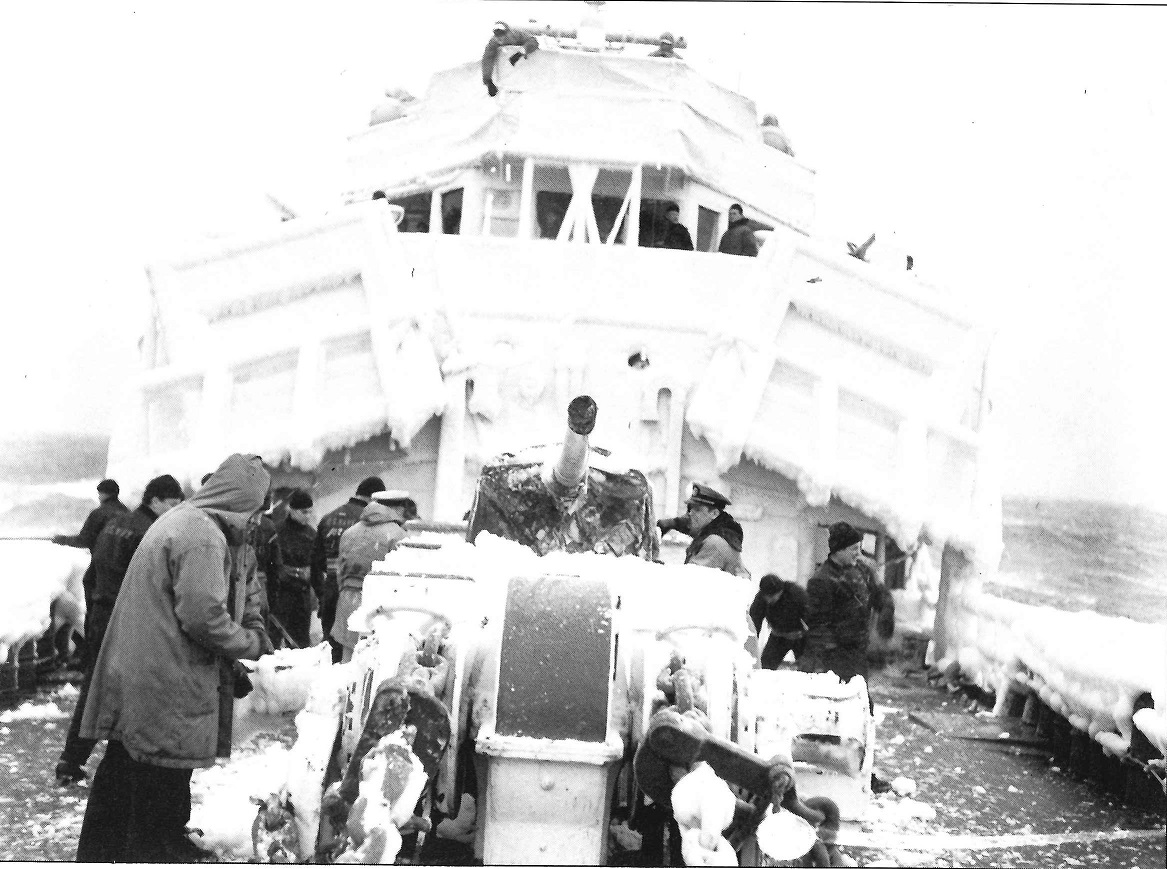 ite. The commission initially consisted of nine American members. It included two former U.S. ambassadors to Denmark and Marie Peary Stafford, the Greenland-born daughter of American Arctic explorer, Robert Peary. She lobbied for establishing American military bases in Greenland.
ite. The commission initially consisted of nine American members. It included two former U.S. ambassadors to Denmark and Marie Peary Stafford, the Greenland-born daughter of American Arctic explorer, Robert Peary. She lobbied for establishing American military bases in Greenland.
The combined councils in Greenland formally requested American assistance on May 3, and invited the U.S. to establish a consulate in Greenland. On the 10th, Coast Guard Cutter Comanche departed for Greenland to establish the consulate in Godthaab. Comanche’s first port call was Ivigtut to visit the cryolite mine’s processing facility, which was located on Arsuk Fjord. The mine’s workforce consisted of Danes and a few Swedes.
Passengers aboard the Comanche included U.S. Consul James Penfield, who became on-scene commander for the Coast Guard in Greenland, Vice Consul George West and five Coast Guard radiomen to operate the consulate’s radio station. The consulate used the radio station at Julianehaab, which was the local junction for the trans-Atlantic radio cable.
Overseas, on May 10th, Germany began its invasion of Holland, Belgium, and France. Britain occupied Iceland without resistance and, at about the same time, Winston Churchill became Great Britain’s prime minister.
Four Coast Guard cutters followed the Comanche. The 327-foot Cutter Campbell received orders May 15to deliver weapons to Ivigtut, including a three-inch dual-purpose gun, eight .30 caliber Lewis machine guns, 50 Springfield rifles and thousands of rounds of ammunition. On June 30 the Campbell brought aboard board a delegation of six Greenland officials Jun for pas-sage to the U.S. to join the American Greenland Commission and form Greenland’s government-in-exile.
Coast Guard’s “civilianiz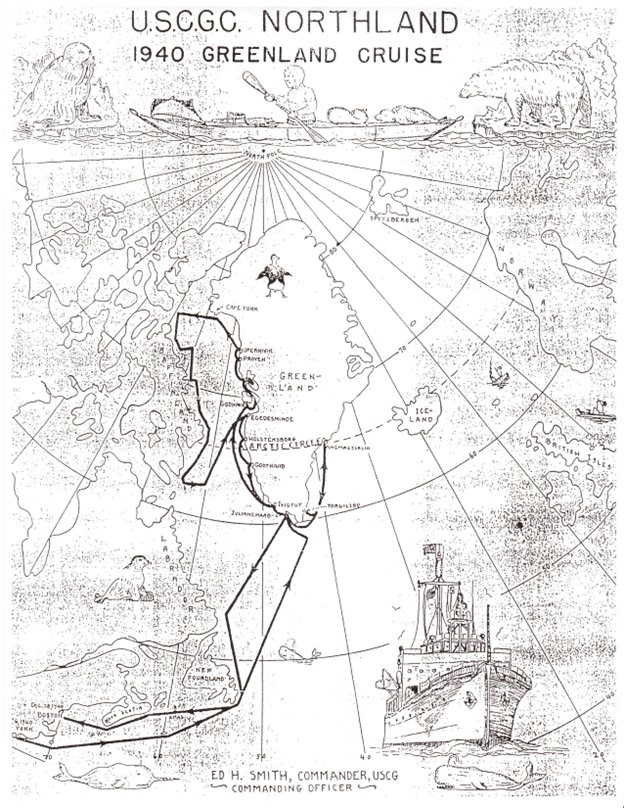 ed” guards
ed” guards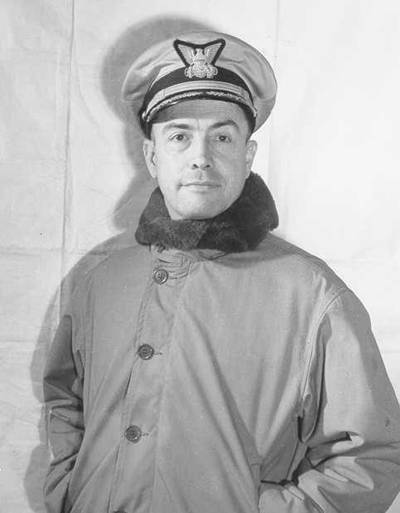
In July, while moored in Boston, Coast Guard Cutter Campbell recruited three of its enlisted men as volunteers for a secret assignment. The men from the Campbell were the first of 14 enlisted men drawn from Coast Guard units to serve as guards at the cryolite mine. The three men met with Commandant Russell Waesche and were informed of their assignment. To avoid the appearance of militarizing Greenland, they would be voluntarily discharged from the Coast Guard and simultaneously hired by the mine company on one-year contracts. They would be paid $125 per month, which was about double their Coast Guard pay, with all clothing, housing and necessities provided. In addition, they would receive a bonus of $225 upon completion of their contracts.
The rest of the agreement was verbal with no paperwork. If the men chose to return to the Coast Guard within three months of the end of their Greenland tour, they would receive more benefits, including a promotion, choice of next duty station, one month’s leave and no loss of longevity for absence from military service. The men were provided police uniforms and traveled to Ivigtut aboard the mine company ship, Julius Thomsen. A 15th man, a Coast Guard cook who had been a cadet on the training ship Danmark, soon joined them.
This unit’s job also included protecting the facilities from sabotage by its European workers whose loyalties were unknown. After the occupation of Denmark, some of the mineworkers re-turned to Europe via New York to neutral Portugal. In 1941, 20 new men replaced the first group of volunteer guards and, in 1942, a U.S. Army artillery unit replaced the second group.
Havana Act
On June 22, 1940, France signed an armistice with Germany and Western Hemisphere possessions of Holland and France were set adrift. The U.S. organized a Pan American Conference in Havana, Cuba. Signed on July 30, the Act of Havana gave the U.S. the right to protect these territories from intrusion by foreign nations.
Meanwhile, on July 27, after outfitting with a seaplane, the 327-foot Cutter Duane deployed to Greenland waters. American military planners foresaw the use of Greenland as a refueling stop for new military aircraft overflying the Atlantic to Britain. The Duane used its seaplane to search for potential airfield sites. Duane’s aircraft covered the southwestern tip of Greenland and sites as far north as the Godhavn on Disko Island.
Germans on Greenland’s East Coast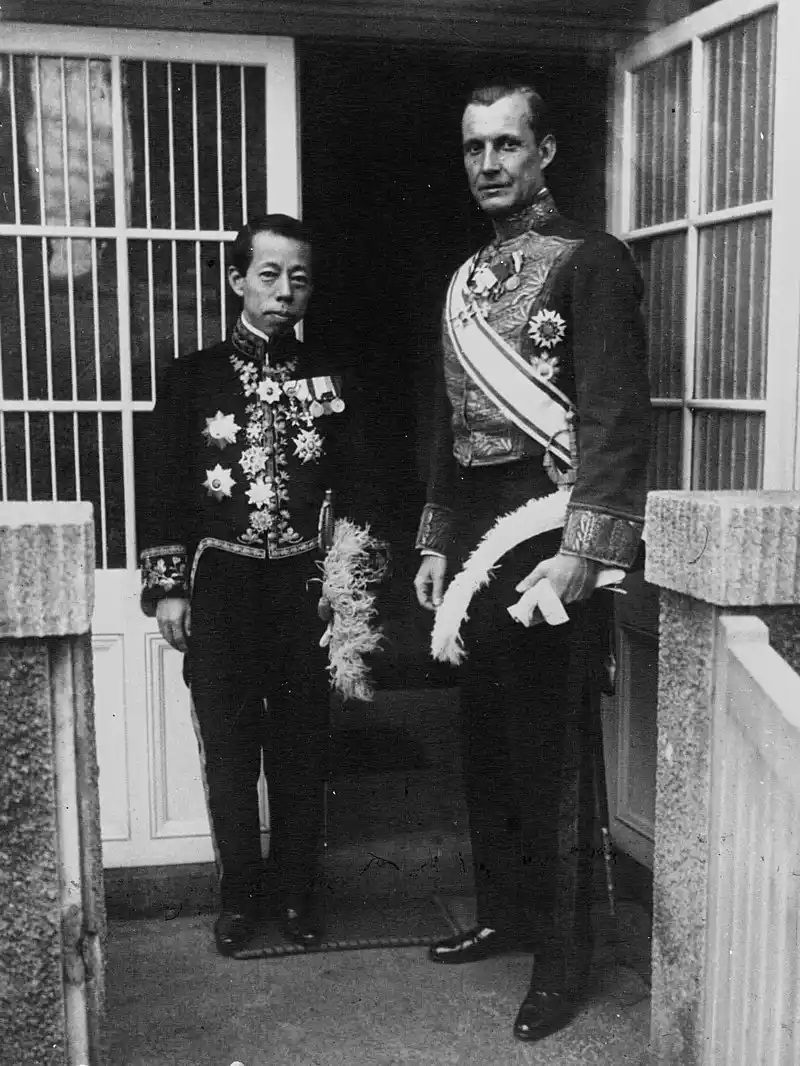
The weather in northwestern Europe generally originates in Greenland and drifts east. Most of Greenland’s eastern coast was uninhabited except for native population centers at Angmagsalik and Scorseby Sound. Danish and Norwegian weather stations were established on the northeast coast as well as some commercial hunter-trapper stations. The men operating these weather stations rotated in and out during summer months and the Germans used these rotations in 1940 and 1941 to infiltrate Danish and Norwegian Nazi loyalists into the stations.
Meanwhile, the Battle of Britain was underway and Germany’s preparations to invade England, designated “Operation Sea Lion,” were well advanced. In 1940, to acquire accurate weather re-ports for Europe, the Nazis employed Norwegian “Quisling” and Danish Nazi weathermen. These men were deployed aboard three Norwegian vessels to operate two Greenland weather stations at Myggbukta and Torgilsbu and establish a new one at Cape Biot.
In June 1940, the Coast Guard icebreaker Northland was serving as a merchant marine training vessel in San Francisco. On the 18th, the cutter received orders to proceed to Boston and from there to Greenland under the command of Cmdr. Edward “Iceberg” Smith. Prior to deployment to his assignment, Smith met with female Arctic explorer Louise Boyd, who had spent three years mapping the northeast coast of Greenland and had just completed her detailed charts. Her information included the location of every weather station on Greenland’s northeast coast, so the Coast Guard asked her not to publish the charts.
On Aug. 15, Northland arrived at Julianehaab on the southwestern corner of Greenland. Smith soon learned the German-controlled Norwegian trawler Ringsel had just arrived at Angmagsalik on the east coast. On the way to the Norwegian weather 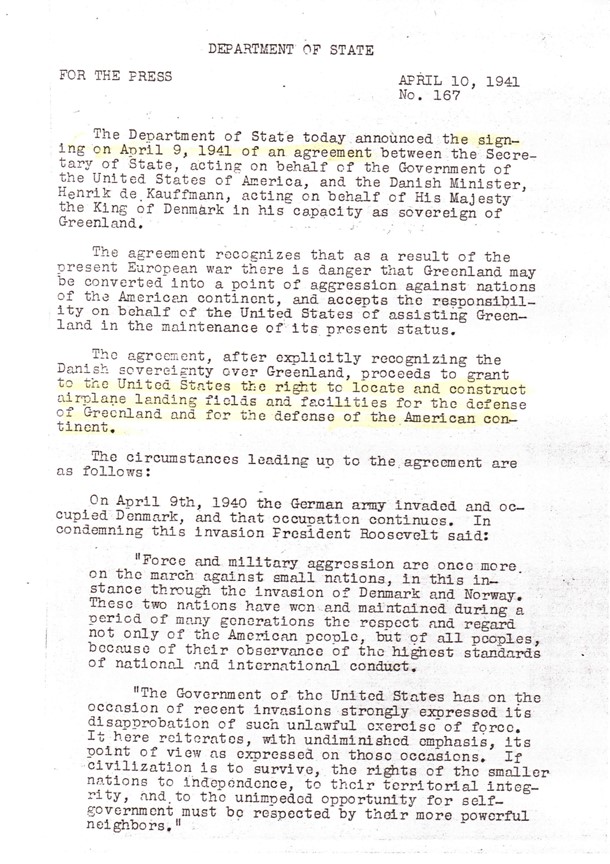 station at Torgilsbu to rotate the station crew, the trawler had damaged its rudder. For legal authority, Northland took aboard the local colony manager and met the Ringsel at Angmagsalik. Since the U.S. was still officially neutral, this situation presented the Northland and U.S. consul a diplomatic quandary. The trawler’s owner, Willie Knutsen, was an American citizen and used the meeting to seek asylum aboard the Northland, which then followed the Ringsel on its way to Torgilsbu. Smith or-dered Northland’s crew to disable the station’s radio and electrical outfit and the cutter facilitated Ringsel’s departure for Norway.
station at Torgilsbu to rotate the station crew, the trawler had damaged its rudder. For legal authority, Northland took aboard the local colony manager and met the Ringsel at Angmagsalik. Since the U.S. was still officially neutral, this situation presented the Northland and U.S. consul a diplomatic quandary. The trawler’s owner, Willie Knutsen, was an American citizen and used the meeting to seek asylum aboard the Northland, which then followed the Ringsel on its way to Torgilsbu. Smith or-dered Northland’s crew to disable the station’s radio and electrical outfit and the cutter facilitated Ringsel’s departure for Norway.
Meanwhile, the British-controlled Free-Norwegian gunboat Fridthof Nansen captured the large German-controlled trawler Vesle Kari. The Nansen also seized the men at the Norwegian weather station at Myggbukta, leaving the station intact but destroying the radio equipment. The Nansen proceeded to the new weather station established at Cape Biot destroying that station and seizing its operators; however, the station’s supply trawler Furnak escaped.
Operation “Sea Lion,” Germany’s plan to invade England in mid-September 1940, was delayed to mid-October and finally cancelled by Adolf Hitler. Field Marshal Wilhelm Keitel, Chief of the German High Command at the time, later wrote in his memoirs: “[Operation Sea Lord] itself was never put into effect, because nobody ventured to predict a sufficiently long period of fine weather for it.” In June 1944, Gen. Dwight Eisenhower would face similar weather problems with the invasion of Normandy, France.
On Sept. 4, Coast Guard Cutter Cayuga arrived at Ivigtut as a replacement for the Comanche, which had returned to New York. Later in September, the Campbell and Duane would follow. They had been busy guarding the cryolite mine, installing aids-to-navigation along the coast where none had existed, mapping the harbors of each village on Greenland’s west coast and delivering supplies to isolated villages. Winter was setting in, so the Cayuga departed in early October.
The Northland remained in Greenland until Dec. 19, 1940. During its stay, the cutter’s crewmembers relocated the three-inch gun at Ivigtut to a site overlooking the fjord’s approach to the cryolite mine. They also surveyed sites for airbases on glacial gravel moraines located in large valleys near the southwestern tip of Greenland. One was located at Kipisako, near Ivigtut, and the other farther southeast at Narsarsuak. Narsarsuak is located at the end of a 50-mile-long irregular fjord named Skov Fjord at its entrance and, at its end, Erik’s Fjord. The airfield site was built across from the former farmstead of Viking explorer Erik the Red.
1941
By early 1941, ice damage to Campbell’s and Duane’s propellers demonstrated that twin-propeller ships were ill suited to serve in Greenland’s coastal waters. Ice-capable ships were needed. Meanwhile, Northland returned to Boston for additional armament and combat modifications.
In January 1941, Polar explorer Richard Byrd’s expedition to the Antarctic was terminated. The expedition’s ships included the former Coast Guard cutter Bear and wooden-hulled vessel North Star, which had previously served the Bureau of Indian Affairs in Alaska. On March 22, both ships departed Antarctica for the U.S. and, on May 5, North Star arrived in Boston to be re-commissioned as a Coast Guard Cutter. Bear arrived in Boston on May 18 and was commissioned the Navy vessel USS Bear. Both ships were equipped with weapons and an amphibian aircraft.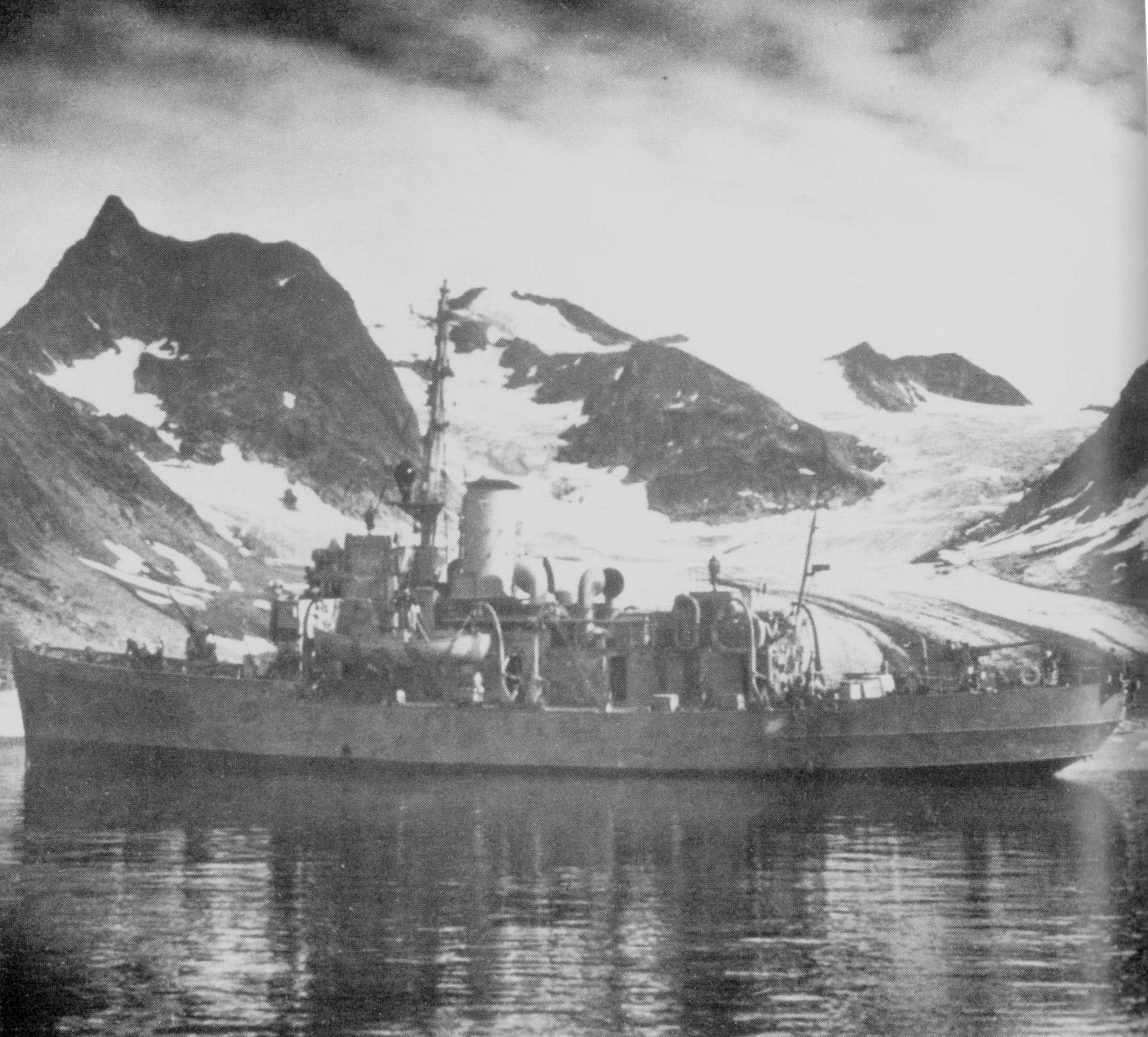
On March 17, the “South Greenland Survey Expedition” departed Boston aboard Coast Guard cutter Cayuga. The expedition included representatives from the Army, Navy, Coast Guard, and State Department and it was tasked with recommending sites for airfields, seaplane bases, radio stations, weather stations, and aids-to-navigation at points along Greenland’s southwest coast.
On April 7, with representatives of the State Department aboard, Northland soon followed to relieve the Cayuga. Northland’s seaplane provided the cutter thorough coverage of Greenland’s southwest coast. Based on its survey, the cutter selected airbase sites at Narsarsuak and Kipisako, which the cutter had visited in 1940.
Greenland Military Bases
On April 9, 1941, Secretary of State Cordell Hull and Danish Ambassador Henrik de Kauffmann signed an agreement “on behalf of the King of Denmark” that made Greenland a protectorate of the United States. The agreement cited the Greenland Council’s request for American assistance and the Act of Havana. The U.S. extended its Neutrality Zone eastward to a line located at 26 degrees longitude between Greenland and Iceland. Danish ambassador Kauffmann was subsequently tried in absentia in Denmark for treason.
Coast Guard operations in Greenland were placed under the control of the U.S. Navy on May 6. The vessels in the Greenland theatre of operations included the Northland, North Star, Comanche, Modoc, Raritan, Algonquin, Navy-manned USS Bear, and survey schooner Bowdoin. In October, the Navy designated this Arctic fleet as the Coast Guard-run “Greenland Patrol” under Smith’s command. Its mission was to protect Greenland, establish U.S. airbases and military facilities, provide search and rescue services, and support Greenland’s citizenry.
Construction of Greenland’s first airbase at Narsarsuak, designated the U.S. base “Bluie West One” (Bluie West-1), began in July 1941. It became the headquarters for both the U.S. Army Air Co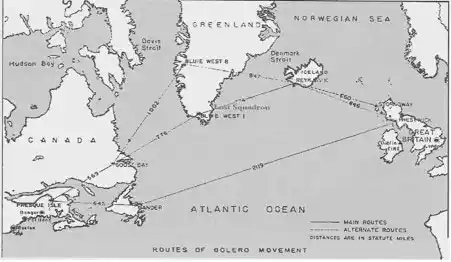 rps’ “Greenland Bases Command” and the Coast Guard’s “Greenland Patrol.” The Army Air Corps codenamed the air base “O-No-To.” Kipisako (Bluie West-2) proved unusable, so, in October, an existing University of Michigan weather studies station and its airstrip at the end of Sondre Strom Fjord and 30 miles north of the Arctic Circle became the auxiliary airbase (Bluie West-8).
rps’ “Greenland Bases Command” and the Coast Guard’s “Greenland Patrol.” The Army Air Corps codenamed the air base “O-No-To.” Kipisako (Bluie West-2) proved unusable, so, in October, an existing University of Michigan weather studies station and its airstrip at the end of Sondre Strom Fjord and 30 miles north of the Arctic Circle became the auxiliary airbase (Bluie West-8).
The “Sledge Patrol” and Germans
Greenland’s northeast coast was typically accessible by ship for only three months of the year. Thus, in August 1941, Smith established the “Sledge Patrol” to observe any return of German weather station activities. The sledge patrolmen consisted of volunteer Danish weather station personnel, hunters and trappers. Under orders from Greenland’s governor, Smith oversaw the evacuation of all other Danes. The Sledge Patrol’s area consisted of about 400 miles of the coast north of the village of Scoresby Sound.
In September 1941, Smith was located at Eskimonaes (Bluie East-5) aboard the Northland and the North Star was anchored at Ella Island (Bluie East-4). Early in September, the Quisling-operated trawler Buskoe arrived at Myggbukta to reactivate the Norwegian weather station there that was shuttered in 1940. On the 12th, while Buskoe’s men tried to re-activate the station, the Northland arrived and seized the trawler and its crew.
300,000 military aircraft produced
On May 16, 1940, with America’s source of strategic cryolite secured, President Roosevelt re-quested military appropriations from Congress. This included the industrial capacity to build at least 50,000 aluminum-skinned aircraft per year. In 1939, aircraft production amounted to only 2,100 military aircraft and most of those were trainers. Because of Roosevelt’s request, over 300,000 U.S. military aircraft would be produced over the course of the war.
The Coast Guard’s Greenland Patrol eventually consisted of more than 50 vessels and got its own squadron of Coast Guard-manned PBY amphibian aircraft. In December 1941, after Ameri-ca’s entry into the war, the Germans began sending uniformed military personnel to Greenland to establish new weather stations. On June 26, 1942, the first large scale trans-Atlantic flight of Al-lied military aircraft to Britain got underway. Thousands of planes followed.